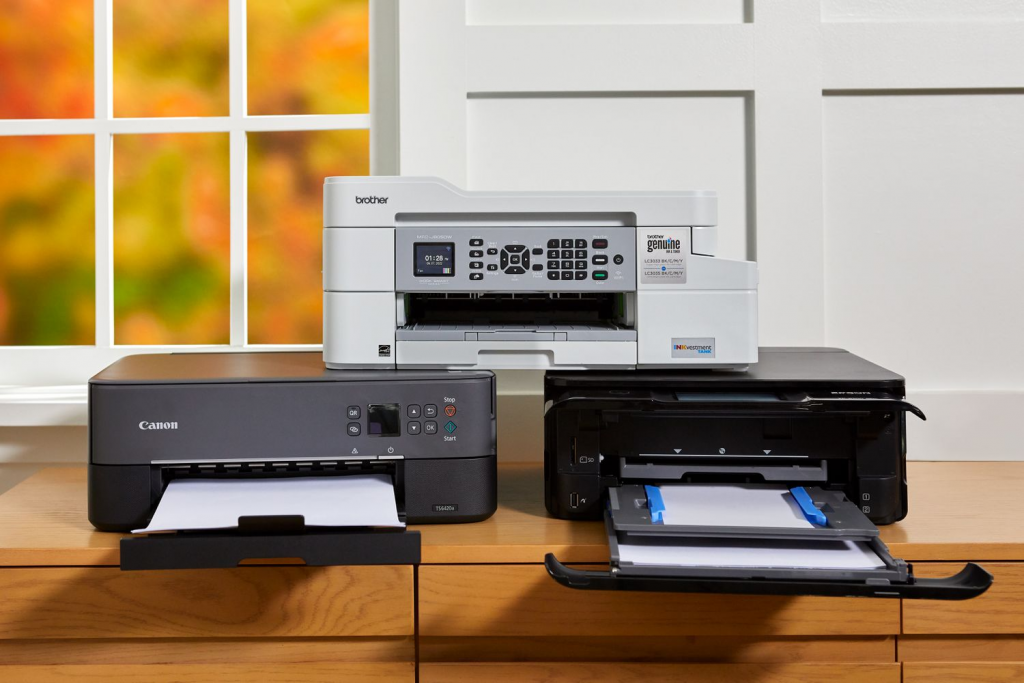When it comes to choosing a printer, one of the primary considerations is whether to opt for an inkjet or laser printer. Both types have their own strengths and are suitable for different printing requirements. Understanding the differences between these two technologies will help you make an informed decision based on your specific needs.
Inkjet printers are known for their versatility and affordability. They use liquid ink cartridges to produce vibrant and detailed prints. Inkjet printers are an excellent choice for home users, students, and small businesses that primarily need to print documents, photos, and occasional graphics. They offer the flexibility to print on various paper types and sizes, making them ideal for creative projects.
On the other hand, laser printers are renowned for their speed, precision, and cost-effectiveness. Laser printers utilize a toner cartridge and a laser beam to create prints. They excel at producing sharp and high-quality text documents, making them well-suited for offices, businesses, and environments with high-volume printing needs. Laser printers are efficient, durable, and deliver fast print speeds, making them a popular choice for professional settings.
When considering cost, inkjet printers typically have a lower upfront price tag. However, it’s essential to factor in the ongoing costs of ink cartridge replacements, which can add up over time, especially for users with frequent printing needs. Laser printers, although relatively more expensive initially, often have a lower cost per page in the long run, making them a cost-effective option for high-volume printing.
Print quality is another crucial factor to consider. Inkjet printers produce exceptional photo-quality prints with vivid colors and smooth gradients, making them an excellent choice for photographers and artists. Laser printers, while not as proficient in photo printing, excel in producing sharp and crisp black-and-white documents, making them ideal for text-heavy materials such as reports, presentations, and contracts.
Additionally, print speed is a significant differentiating factor. Laser printers have faster print speeds compared to inkjet printers, especially when it comes to high-volume black-and-white printing. This speed advantage makes laser printers more efficient for large-scale print jobs, reducing waiting times and increasing productivity.
Ultimately, the choice between an inkjet and laser printer depends on your specific printing needs and budget. Consider factors such as the type of documents you’ll be printing, the desired print quality, print volume, and ongoing maintenance costs. Assessing these factors will help you determine which printer technology aligns best with your requirements and provides the optimal balance of cost, quality, and performance.

Printers are essential devices for both personal and professional use, and proper maintenance is crucial to ensure their longevity and optimal performance. By implementing a few simple maintenance practices, you can maximize the lifespan of your printer and minimize the risk of common issues. Here are some valuable tips for maintaining your printer:
Keep it Clean: Regularly clean your printer to remove dust, debris, and ink residue. Use a lint-free cloth and non-abrasive cleaning solutions recommended by the printer manufacturer. Pay attention to areas such as the paper tray, print heads, and rollers.
Use High-Quality Paper: Select the right paper for your printer and print job. Low-quality paper can cause paper jams, print smudges, and damage internal components. Follow the manufacturer’s recommendations for paper weight, size, and type.
Replace Ink and Toner Cartridges Wisely: Replace ink or toner cartridges before they completely run out. Running a printer with empty cartridges can damage the print heads. Use genuine cartridges or high-quality compatible alternatives to ensure optimal print quality and prevent potential leaks.
Avoid Paper Jams: Load the paper properly into the paper tray, ensuring it aligns with the guides. Do not overfill the tray, as it can lead to paper jams. If a paper jam occurs, follow the printer’s instructions to remove the jammed paper carefully.
Update Firmware and Drivers: Periodically check for firmware and driver updates provided by the printer manufacturer. These updates often include performance enhancements and bug fixes that can improve printer functionality and reliability.
Properly Shut Down the Printer: When not in use, turn off the Printing services London using the power button rather than unplugging it. This ensures that the printer goes through the proper shutdown sequence, which helps prevent damage to internal components.
Regularly Print: Even if you don’t have immediate printing needs, it’s beneficial to print a test page or two occasionally. Printing helps prevent the ink or toner from drying up and clogging the print heads.
Schedule Professional Maintenance: Consider scheduling regular professional maintenance for your printer, especially if it is used heavily in a business setting. Professional technicians can perform deep cleaning, lubrication, and preventive maintenance to keep your printer in optimal condition.
By following these maintenance tips, you can extend the lifespan of your printer, reduce the frequency of issues, and ensure consistent and high-quality prints. Taking care of your printer not only saves you time and money in the long run but also helps maintain productivity and efficiency in your printing tasks.
